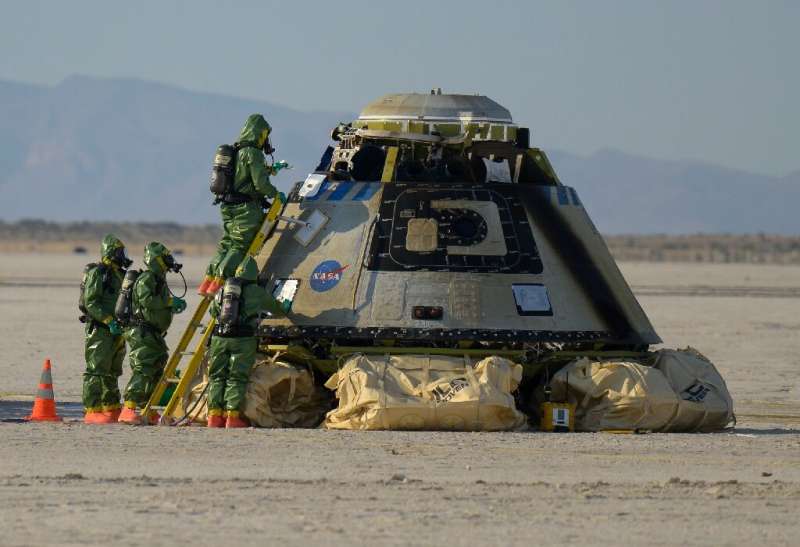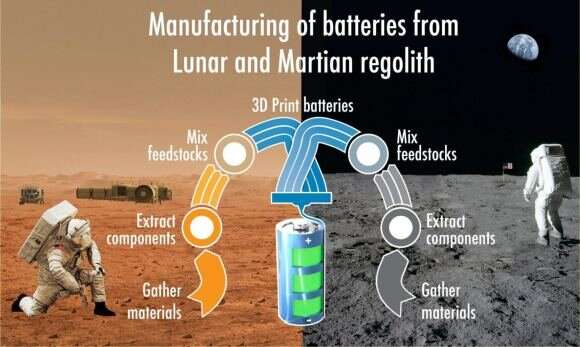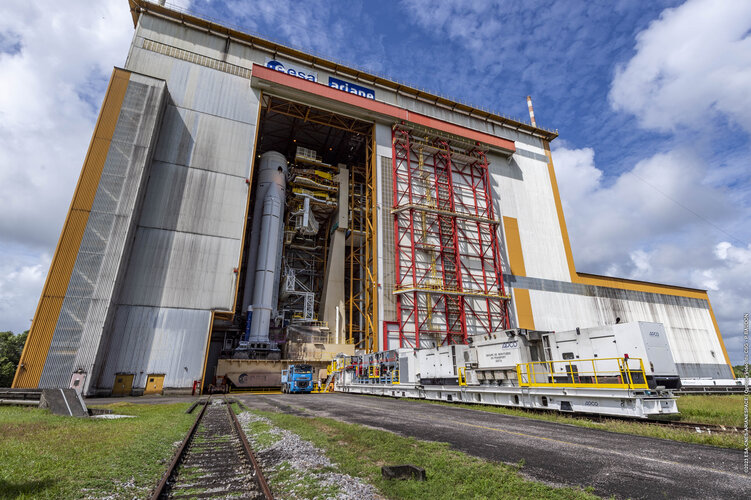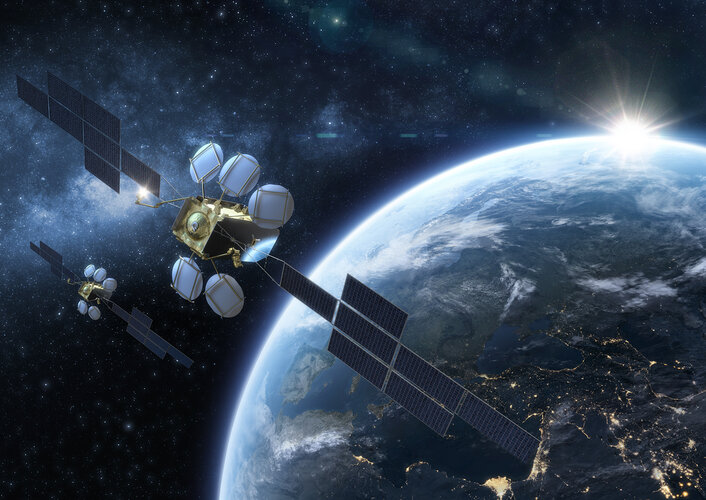
Copernical Team
NASA, Boeing aiming for July launch of Starliner space capsule

The first crewed flight of Boeing's Starliner space capsule to the International Space Station (ISS) will take place in July, Boeing and NASA officials said Wednesday.
The CST-100 Starliner mission, which had previously been planned for April, will take place no earlier than July 21, the officials said.
"We've deliberated and decided that the best launch attempt is no earlier than July 21 for CFT," the crew flight test, Steve Stich, the manager of NASA's Commercial Crew Program, told reporters.
"We feel pretty confident with that date," added Mark Nappi, the Starliner program manager at Boeing.
Stich said more time was needed to certify the parachute system designed to bring the astronauts and the spacecraft safely back to Earth, and a ground test of the parachutes will be conducted in May.
Don't take batteries to the moon or Mars, 3D print them when you get there

When the Artemis astronauts and future explorers go to the moon and Mars, they'll need power. Lots of it. Of course, they'll use solar panels to generate the juice they need for habitats, experiments, rovers, and so on.
The Making of Juice – Episode 10.1
 Video:
00:12:07
Video:
00:12:07
The Making of Juice series takes the viewer behind the scenes of the European space industry, space technology and planetary science communities around ESA’s Jupiter Icy Moons Explorer (Juice) mission.
Juice has a state-of-the-art science payload comprising remote sensing, geophysical and in situ instruments. This episode focuses on the in situ instruments, which will study the particle, magnetic, radio and plasma environment in the Jupiter system.
A magnetometer (J-MAG) equipped with sensors will characterise the Jovian magnetic field and its interaction with that of Ganymede, and will study the subsurface oceans of the icy moon. The Particle Environment Package
Ariane 5 rocket for the Juice launch being transferred to final assembly
 Image:
Ariane 5 rocket for the Juice launch being transferred to the final assembly building at Europe's Spaceport in French Guiana for payload integration and last preparation for flight VA260
Image:
Ariane 5 rocket for the Juice launch being transferred to the final assembly building at Europe's Spaceport in French Guiana for payload integration and last preparation for flight VA260 First Eurostar Neo satellite reaches operational orbit

The first Eurostar Neo satellite built under ESA’s Neosat Partnership Project has completed its electric orbit raising to reach its geostationary position some 36 000 kilometres above Earth.
Journey to Tenby!
 Over the past several weeks, Perseverance has traveled up Jezero's western fan and has begun exploring its upper surface, a potential treasure-trove of information about the river systems that flowed into the crater and the rocks they may have brought in from other areas!
After dropping off our first sample depot at Three Forks, we began to explore further up the fan then we had ever been
Over the past several weeks, Perseverance has traveled up Jezero's western fan and has begun exploring its upper surface, a potential treasure-trove of information about the river systems that flowed into the crater and the rocks they may have brought in from other areas!
After dropping off our first sample depot at Three Forks, we began to explore further up the fan then we had ever been Flight 49 Preview - By the Numbers
 NASA's Ingenuity Mars Helicopter is preparing for its 49th flight on Mars, with a flight date scheduled for March 29th, 2023. The helicopter's goal for this flight is to reposition itself and conduct imaging science targets. During the flight, Ingenuity will travel a horizontal distance of 893.9 feet (272.5 meters) and reach a maximum altitude of 40 feet (12 meters), with a pop-up to 52.5 feet (
NASA's Ingenuity Mars Helicopter is preparing for its 49th flight on Mars, with a flight date scheduled for March 29th, 2023. The helicopter's goal for this flight is to reposition itself and conduct imaging science targets. During the flight, Ingenuity will travel a horizontal distance of 893.9 feet (272.5 meters) and reach a maximum altitude of 40 feet (12 meters), with a pop-up to 52.5 feet ( BlackSky's completes commissioning within 18 hours of orbital delivered on news satellites
 BlackSky Technology Inc. (NYSE: BKSY) successfully commissioned two new satellites that began revenue-generating commercial operations within 18 hours of "The Beat Goes On" launch mission.
"BlackSky has more than doubled our on-orbit capacity in the last 18 months, with enough capacity to support growth over the next two years," said Nick Merski, BlackSky chief operating officer. "Our flex
BlackSky Technology Inc. (NYSE: BKSY) successfully commissioned two new satellites that began revenue-generating commercial operations within 18 hours of "The Beat Goes On" launch mission.
"BlackSky has more than doubled our on-orbit capacity in the last 18 months, with enough capacity to support growth over the next two years," said Nick Merski, BlackSky chief operating officer. "Our flex Leaky Russian space capsule lands safely in Kazakhstan
 Russia's uncrewed Soyuz spacecraft landed in Kazakhstan Tuesday morning after suffering a major coolant leak in December.
The Soyuz MS-22 spacecraft landed in Kazakhstan at 7:46 a.m. EDT on Tuesday after leaving the docking port of the Russian-built Rassvet module of the International Space Station.
"It's de-orbiting and descent to Earth went smoothly," Roscosmos officials announ
Russia's uncrewed Soyuz spacecraft landed in Kazakhstan Tuesday morning after suffering a major coolant leak in December.
The Soyuz MS-22 spacecraft landed in Kazakhstan at 7:46 a.m. EDT on Tuesday after leaving the docking port of the Russian-built Rassvet module of the International Space Station.
"It's de-orbiting and descent to Earth went smoothly," Roscosmos officials announ Flight simulations: putting Juice under pressure
 Video:
00:58:00
Video:
00:58:00
Sat in a windowless office beneath ESA’s Main Control Room in Darmstadt, Germany, two Simulations Officers have complete control over the Juice spacecraft and ESA’s deep space ground stations across the globe – and they take full advantage.
These aren’t the real 35-metre antennas or the actual spacecraft (currently in Kourou, French Guiana), but a complex simulator. For teams that will fly the mission for real, it all looks, feels and behaves just like the real thing. The ‘problem’ for them is, it keeps going wrong.
Down in the simulations bunker, the Officers are revelling in their dastardly plan

